Intriguing Ancient Symbols: Unveiling the Sacred Mayan Symbols and Their Meanings
Delve into the enigmatic world of Mayan civilization, where symbols held profound significance and were channels of communication with the divine. The ancient Mayans developed a complex system of symbols that encompassed their rich culture, history, and beliefs. These symbols, steeped in mystery, offer a window into their worldview, spirituality, and deep connection with the natural world. Join us on an exploration of the captivating Mayan symbols, their origins, meanings, and their continued relevance in modern times. Journey with us as we unlock the secrets of the Mayan civilization and discover the hidden significance behind these mesmerizing symbols.
Contents
- History of Mayan Symbols
- Common Mayan Symbols
- Mayan Symbols and Their Interpretations
- Secret Mayan Symbols
- Mayan Symbols in Modern Times
- Conclusion
-
Frequently Asked Questions
- 1. What are some common Mayan symbols?
- 2. How did Mayan symbols originate?
- 3. What was the importance of Mayan symbols in Mayan culture?
- 4. What does the Jaguar symbolize in Mayan symbolism?
- 5. What role did water play in Mayan symbolism?
- 6. How did the Mayans interpret the symbol of the eclipse?
- 7. What is the significance of the Sacred Ceiba Tree in Mayan symbolism?
- 8. How does Mayan symbolism influence contemporary art?
- 9. Why do people choose Mayan symbols as tattoos?
- 10. How does the Mayan calendar serve as a roadmap to destiny?
- References
-
Frequently Asked Questions
- What is the significance of Mayan symbols?
- Were Mayan symbols used for writing?
- What is the meaning of the Winged Serpent symbol?
- What does the Sun symbolize in Mayan culture?
- What is the significance of the Maize symbol?
- What does the Jaguar symbolize in Mayan culture?
- What is the meaning of the Monkey symbol in Mayan mythology?
- What does the Water symbol represent in Mayan culture?
- What does the Eclipse symbolize in Mayan culture?
- How are Mayan symbols used in contemporary art?
- References
- Read More
History of Mayan Symbols
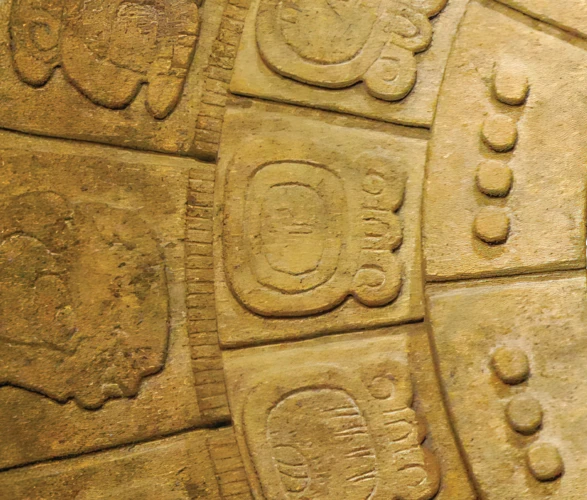
The history of Mayan symbols is a fascinating journey through time, reflecting the rich heritage and spiritual beliefs of the Mayan civilization. The origins of these symbols can be traced back to the ancient Mayan culture, where they were intricately woven into everyday life. The Mayans believed that symbols held immense power, serving as a means of communication between the human and divine realms. These symbols adorned sacred spaces, were painted on pottery, and featured in intricate hieroglyphic scripts. The Mayans attributed great importance to celestial bodies and cosmic events, such as sunrises, eclipses, and the movement of stars, which heavily influenced their symbolism. These symbols represented deities, natural elements, animals, and cosmic forces, each carrying profound meanings and serving as a potent connection to their vast mythology and spiritual wisdom. The Mayan symbols continue to mystify and captivate us, offering a glimpse into a civilization that revered the interplay between the physical and spiritual worlds. To gain a deeper understanding of the Mayan symbols, we must delve into their significance in Mayan culture, their interpretations, and their role in contemporary art and expression.
Origins of Mayan Symbolism
The origins of Mayan symbolism can be traced back to the ancient roots of the Mayan civilization, which flourished in what is now known as Central America. The Mayans were deeply connected to the natural world, and their symbols were a reflection of their close relationship with the environment. The symbols were influenced by various factors, including astronomy, religion, mythology, and daily life experiences. Astronomy played a significant role in Mayan symbolism, as they closely observed celestial bodies and believed that they held great power and influence over their lives. The Mayans developed a sophisticated understanding of the movements of the sun, moon, and stars, and incorporated this knowledge into their symbols. Religion and mythology also played a crucial role in shaping Mayan symbolism. The Mayans worshipped a pantheon of deities, each representing different aspects of the natural world. These deities were often depicted in symbolic form, with specific characteristics and attributes. Mayan symbols were also influenced by everyday life experiences, such as farming, hunting, and community rituals. For example, agricultural symbols, such as the maize plant, represented fertility and abundance, which were crucial for the Mayan civilization’s survival. The origins of Mayan symbolism reflect a rich tapestry of influences, including astronomy, religion, mythology, and daily life experiences, all of which contributed to the intricate and meaningful symbols that are still revered to this day. To understand the importance of stellar evolution in understanding the universe, one must explore the connection between the Mayan symbolism and the cosmic forces that guided their beliefs and way of life.
Importance in Mayan Culture
The importance of Mayan symbols in Mayan culture cannot be overstated. These symbols played a pivotal role in shaping the worldview, religious practices, and daily lives of the Mayan people. Symbolism was embedded in every aspect of their society, from architecture to art, from rituals to hieroglyphic scripts. Mayan symbols served as a bridge between the physical and spiritual realms, allowing the Mayans to communicate with their deities and ancestors. One of the key reasons for the significance of these symbols was the Mayans’ deep connection with the natural world. Animals, plants, celestial bodies, and natural elements were venerated and often depicted in Mayan art and symbolism, highlighting their reverence for the interconnectedness of all living beings. By representing the diverse aspects of their environment, Mayan symbols provided a means to understand and navigate the intricate relationship between humans and nature. These symbols were crucial in the communication of historical events, genealogy, and myths, ensuring the transmission of cultural knowledge across generations. The complex nature of Mayan symbolism required individuals with specialized knowledge, such as shamans and priests, to interpret and impart the meanings of these symbols to the wider community. The symbols were not mere decorations but held profound spiritual and cultural significance, cementing their importance in the Mayan culture. Through these symbols, the Mayans found a way to connect with the cosmic forces, seek guidance, and maintain harmony with the world around them. To truly appreciate the depth and breadth of Mayan culture, one must fully grasp the importance and intricate symbolism that shaped their lives and beliefs. For more information on the role of shamans and priests in Mayan mythology, you can explore the role of shamans and priests in Mayan mythology.
Common Mayan Symbols
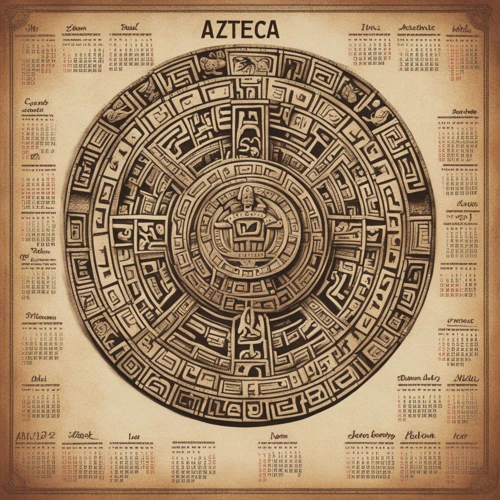
Mayan symbols encompass a vast array of meanings and representations, reflecting the complexity and depth of the Mayan culture. Among the common Mayan symbols, three stand out as pillars of their belief system. The Winged Serpent, known as Quetzalcoatl, was a symbol of power and wisdom, representing the divine connection between earth and sky. The Sun, or Kin, held immense importance to the Mayans, symbolizing vitality, light, and the source of life itself. Another significant symbol was Maize, associated with Hun Hunahpu, the Maize God. Maize represented sustenance, fertility, and the cyclical nature of life. These symbols were interwoven into the fabric of Mayan society, appearing in artwork, architecture, and religious ceremonies. They held profound significance, serving as reminders of the interconnectedness of humans, nature, and the divine. Discovering the meanings behind these common Mayan symbols allows us to embark on a journey of understanding their spirituality, mythology, and the invaluable wisdom they left behind for us to explore.
Winged Serpent: Quetzalcoatl
The Winged Serpent, known as Quetzalcoatl in Mayan culture, is a symbol of great significance and reverence. Representing the union of heaven and earth, Quetzalcoatl embodies the duality of existence. This mythical creature is often depicted with a serpent’s body, symbolizing its connection to the earthly realm, and majestic bird-like wings, symbolizing its association with the heavens. As a divine symbol, Quetzalcoatl signifies wisdom, knowledge, and spiritual enlightenment.
In Mayan mythology, Quetzalcoatl was considered a deity associated with creation, agriculture, and the guiding force of civilization. He was believed to have played a vital role in the shaping of the world and the awakening of human consciousness. Quetzalcoatl was also associated with wind, rain, and the cycles of nature, emphasizing his role as a provider and sustainer of life.
The symbolism of the Winged Serpent extends beyond the Mayan civilization. In Aztec culture, Quetzalcoatl was revered as one of the most important deities, often associated with fertility, arts, and culture. His influence reached far and wide, with legends of his deeds spreading throughout Mesoamerica.
The portrayal of Quetzalcoatl as a Winged Serpent reflects the awe-inspiring connection between the celestial and earthly realms. This symbol represents a harmonious balance between the cosmic forces and the natural world, reminding us of the interconnectedness of all things. The reverence for Quetzalcoatl is a testament to the Mayan people’s deep respect for nature, spiritual wisdom, and the pursuit of cosmic harmony.
Today, the Winged Serpent symbol continues to hold meaning and fascination. It is often featured in contemporary art, jewelry, and tattoos, serving as a reminder of the significance of ancient wisdom and the enduring legacy of the Mayan civilization. Exploring the symbolism of Quetzalcoatl opens a gateway to the mysteries and insights of the Mayan culture, connecting us to a profound spiritual heritage that transcends time and borders. Embracing the teachings of Quetzalcoatl encourages us to seek wisdom, pursue enlightenment, and honor the sacred interplay between the heavens and the earth.
To truly appreciate the significance of the Winged Serpent and its role in Mayan culture, we must explore other Mayan symbols and their interpretations. Each symbol offers a unique window into the beliefs and values of this ancient civilization. Let us now journey further into the realm of Mayan symbolism and unravel the secrets they hold.
Sun: Kin
In Mayan symbolism, the Sun, known as “Kin,” represented a powerful and central force in their cosmology and daily life. The Sun was associated with warmth, light, and life-giving energy. It was seen as the source of all creation and the ruler of the celestial realm. The Mayans believed that their gods resided in the Sun, and it played a significant role in their religious and agricultural practices. The Sun was often depicted as a stylized face with human-like features, adorned with elaborate headdresses and rays emanating in all directions. These rays represented the Sun’s life-affirming energy reaching out to all corners of the world. The Mayans paid great reverence to the Sun, attributing to it qualities of leadership, authority, and divine power. Its movement across the sky influenced their calendars, as they closely observed and recorded solar cycles and solstices. The concept of the Sun, as “Kin,” was deeply ingrained in Mayan culture, representing not just a physical celestial body, but also embodying spiritual significance. Today, the Mayan symbol of the Sun continues to inspire awe and fascination, reminding us of the profound relationship between nature, spirituality, and the interconnectedness of all things.
Maize: Hun Hunahpu
Maize, known as Hun Hunahpu in Mayan culture, held profound significance as a symbol representing sustenance, fertility, and life itself. The Mayans revered maize as a sacred crop that sustained their civilization and fostered abundance. It played a central role in their agricultural practices and formed the foundation of their diet. Maize was not only a source of physical nourishment but also held spiritual significance. It was associated with the Mayan corn god, Hun Hunahpu, who symbolized the cycle of life, death, and rebirth. According to Mayan mythology, when the hero twins, Hunahpu and Xbalanque, were slain by the Lords of the Underworld, their bodies were buried, and from their burial site, maize sprouted, signifying their transformation and the eternal cycle of life. This legend illustrates the deep connection between maize, sacrifice, and the renewal of life. The Mayans depicted maize in their artwork, ceremonies, and rituals, honoring its role as a life-giving force. Today, maize remains a cherished symbol in Mayan culture, representing not only sustenance but also resilience and the interconnectedness between humans and the natural world. The reverence for maize reinforces the Mayan belief that nature holds the key to our survival and spiritual well-being, a principle that resonates in many indigenous cultures to this day.
Mayan Symbols and Their Interpretations
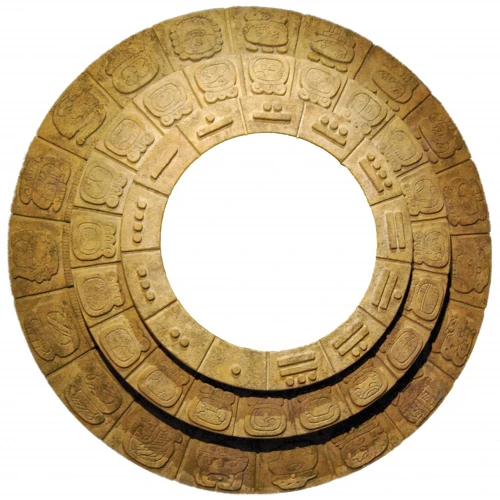
Mayan symbols are steeped in profound interpretations, revealing the deep-rooted beliefs and wisdom of the ancient Mayan civilization. Each symbol carries a unique significance, providing insights into the natural world, human existence, and the divine. The Jaguar, a symbol of power and strength, represents the Mayan ruler and their connection with the spiritual realm. The Monkey, known as the trickster, embodies mischief and unconventional wisdom. Water symbolizes the source of life, holding fundamental importance in Mayan agricultural practices and spirituality. These interpretations offer a glimpse into the Mayan understanding of the world and their relationship with nature and the supernatural. By decoding these symbols, we gain a greater appreciation for the intricate layers of Mayan culture and their intricate worldview. The Mayan symbols remind us of the vast complexities of the human experience and the interconnectedness between all aspects of existence, both seen and unseen. To fully grasp the profound meanings of Mayan symbols, we must explore their representations, interpretations, and their significance in Mayan cosmology.
Jaguar: The Symbol of Power
The Jaguar, revered by the ancient Mayans as a symbol of power and strength, held a prominent place in their mythology and artwork. This majestic creature was believed to possess supernatural abilities and was associated with rulers, warriors, and the divine. The Jaguar symbolized the fierce and untamed forces of nature, embodying both the physical and spiritual realms. Its presence in Mayan culture represented authority, leadership, and protection. The association between the Jaguar and power can be seen in the depictions of Mayan deities, such as the jaguar-headed god, the Maize God, who represented agricultural abundance and fertility. The Jaguar’s significance extended beyond the earthly realm; it was also believed to have the ability to traverse between different realms and act as a mediator between the human and divine worlds. It served as a connection to the ancestral spirits and carried the energy of transformation and rebirth. The depiction of the Jaguar in Mayan art often showcased its fierce teeth and powerful stance, symbolizing its unwavering dominance and authority. Today, the Jaguar continues to be an emblem of strength and potency, representing a deep-rooted connection to nature and our primal instincts. By understanding the symbolism of the Jaguar in Mayan culture, we gain insight into their perception of power and the profound interplay between humans and the natural world.
Note: Internal link added for further exploration of the cosmic forces and their relevance in Mayan symbolism and understanding the universe.
Monkey: The Trickster
Monkey, known as B’atz’ in Mayan mythology, is a symbol that represents the trickster archetype. In Mayan culture, the monkey was associated with playfulness, mischief, and creativity. Depicted as a mischievous creature with its tail playfully curled, the monkey symbolized the balance between chaos and order. It served as a reminder that life is not always predictable, and that unexpected twists and turns can lead to new opportunities and growth. The monkey’s playful nature also represented the importance of laughter and humor in daily life. In Mayan belief, B’atz’ was not just a mere trickster; it was also revered as the patron of the arts and crafts. The monkey was associated with weaving, pottery, and other creative endeavors, symbolizing the ability to shape and mold reality. It was believed that B’atz’ had the power to connect the spiritual and physical realms through its creations.
One fascinating myth involving B’atz’ is the story of the Hero Twins, Hunahpu and Xbalanque, who journeyed to the underworld to avenge the death of their father. In their quest, they encounter various challenges and adversaries, including the mischievous monkey B’atz’. B’atz’ tests the hero twins’ agility and intelligence, challenging them to a game of ball. Through their wit and cleverness, the hero twins outsmart the monkey and continue on their journey. This myth illustrates the monkey’s role as a catalyst for growth and transformation, as the hero twins are able to learn important lessons from their encounter with B’atz’. The monkey symbolizes the power of adaptability and quick thinking in the face of adversity.
In contemporary art and popular culture, the monkey symbol continues to be used as a representation of lightheartedness and creativity. It can be seen in various forms of artistic expression, from paintings and sculptures to jewelry and tattoos. The mischievous nature of the monkey serves as a reminder not to take life too seriously and to embrace spontaneity and playfulness. Embodying the spirit of the trickster, the monkey symbolizes the potential for unexpected surprises and the ability to find joy in the midst of chaos. Through its symbolism, the monkey encourages us to embrace our own creativity, adaptability, and ability to navigate through life’s uncertainties.
Water: The Source of Life
Water has always been revered as a symbol of life and purity in the Mayan civilization. In Mayan culture, water was believed to be the source of all existence, representing vitality, regeneration, and the balance of energies. The Mayans recognized the vital role that water played in sustaining life, supporting their agricultural practices and providing nourishment to their communities. This deep appreciation for water is reflected in the Mayan symbols associated with it.
One prominent Mayan symbol related to water is the glyph known as “Ik”. The “Ik” glyph depicts a water drop or a stream, emphasizing the significance of water as a life-giving force. It symbolizes the fluidity of life and the interconnectivity of all living beings. The “Ik” symbol is often used to invoke healing, purification, and rejuvenation.
Another significant water-related Mayan symbol is the deity “Chaac”, the rain god. Chaac is often depicted with a serpent emerging from his mouth to represent the flowing water. The serpent’s association with Chaac signifies the transformative power of water, as it can bring both blessings and destructive floods. The Mayans believed that Chaac controlled the rain, enabling agriculture to flourish and sustaining life in their communities.
Water was also incorporated into the sacred rituals and ceremonies of the Mayans. The act of purification through water was an important part of these rituals, symbolizing the cleansing of both the physical and spiritual realms. It represented a state of renewal and rebirth, allowing individuals to connect with the divine and attain spiritual enlightenment.
The symbolism of water in Mayan culture goes beyond its physical properties. It represents the flow of energy, the cyclical nature of life, and the balance between opposing forces. In the Mayan cosmology, water was associated with the west, which represented the realm of the ancestors and the afterlife.
As we explore the significance of water in Mayan symbolism, we gain a deeper understanding of their reverence for the natural elements and their interconnectedness with the spiritual realm. The Mayans recognized the vital role of water in sustaining life, and their symbols serve as a reminder of the intricate relationship between humanity and the natural world. Incorporating elements of water symbolism into our own lives can bring about a deeper appreciation for the sacredness of this life-giving resource.
Source: Importance of Stellar Evolution in Understanding the Universe.
Secret Mayan Symbols
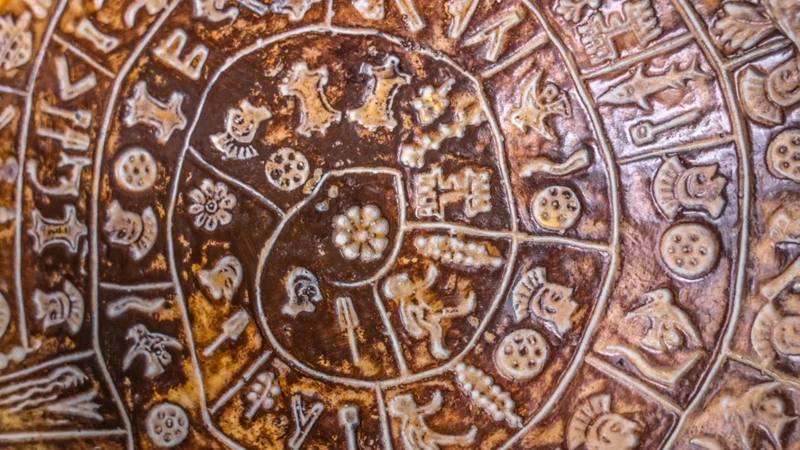
Step into the realm of mystery and intrigue as we explore the , hidden within the depths of Mayan culture. These symbols hold profound significance, representing cosmic transformations, divine connections, and the roadmap to destiny. Among these mysterious symbols is the Eclipse, a symbol of cosmic transformation and the merging of celestial forces. The Mayans believed that eclipses marked pivotal moments of change and rebirth, influencing the course of both individuals and civilizations. Another enigmatic symbol is the Sacred Ceiba Tree, believed to be the gateway between the physical and spiritual realms. It symbolized the Mayan’s connection with the gods and was revered as a divine presence in their lives. Lastly, the Mayan Calendar serves as a roadmap to destiny, guiding the Mayans through their cycles of life, celebrations, and prophecies. The intricate combination of mathematics, astronomy, and religious belief embedded within the Mayan calendar continues to awe and puzzle researchers even today. These secret Mayan symbols offer us glimpses into a mysterious and ancient world, inviting us to unravel their hidden meanings and contemplate their relevance in our modern lives. To discover more about these secret Mayan symbols and their intriguing interpretations, continue on this captivating journey of discovery.
The Eclipse: The Cosmic Transformation
The Eclipse: The Cosmic Transformation
The Mayans viewed solar and lunar eclipses as transformative events, symbolizing the cosmic balance and the cyclical nature of life. The alignment of the sun, moon, and earth during an eclipse was seen as a celestial dance, where the forces of light and darkness converged. According to Mayan beliefs, an eclipse signified a temporary disruption in the cosmic order, a time of reflection, renewal, and potential transformation. The sun, representing masculine energy and the conscious self, would momentarily be obscured by the moon, symbolizing feminine energy and the subconscious. This cosmic event was seen as an opportunity for individuals to delve deep within themselves and explore the union of opposing forces present in all aspects of existence. The Mayans believed that during an eclipse, the veil between the physical and spiritual realms became thinner, allowing for heightened spiritual awareness and connection. It was a time for rituals, meditation, and contemplation, as individuals sought to harness the transformative energies present in the celestial phenomenon. The Mayan symbol for the eclipse featured a sun and moon intertwined, symbolizing the harmonious interplay between light and shadow, creation and destruction, life and death. This symbol was a reminder of the constant need for balance and the cyclical nature of existence. The Mayans saw the eclipse as a potent symbol of cosmic harmony and transformation, a reminder that change is an integral part of life’s journey. To learn more about the harmonious interplay of cosmic forces, you can explore the concept of Yin and Yang, found in various cultures, including in the zodiac signs of Taurus and Libra, which embody the delicate balance and harmony in life’s cycles.
The Sacred Ceiba Tree: Connection with the Gods
The Sacred Ceiba Tree played a significant role in the spiritual beliefs of the Mayan civilization, serving as a powerful symbol of connection with the gods. Known as “Yaxche” in the Mayan language, this magnificent tree was revered for its immense size and height, reaching towards the heavens. Considered the World Tree or Axis Mundi, it was believed to be the link between the earthly realm, the celestial realm, and the underworld. The Mayans believed that the gods resided within the branches and roots of the Ceiba Tree, making it a sacred site for offerings, rituals, and ceremonies. It was believed that by communing with the tree, one could connect with the divine and receive guidance or blessings. The Ceiba Tree symbolized the interconnectedness of all beings and the harmonious balance between the spiritual and natural worlds. Its branches reaching towards the sky represented the celestial realm, while its roots delving deep into the earth symbolized the underworld. This sacred connection with the gods through the Ceiba Tree was integral to Mayan cosmology and influenced their spiritual practices, reinforcing the belief in the interconnectedness and interdependence of all living beings. Today, the Ceiba Tree continues to hold cultural significance among Mayan communities, embodying their deep-rooted spirituality and connection to their ancient traditions and beliefs.
The Mayan Calendar: A Roadmap to Destiny
The Mayan Calendar: A Roadmap to Destiny
The Mayan calendar is a remarkable testament to the advanced astronomical knowledge possessed by the Mayan civilization. It is a complex system that consists of multiple interlocking cycles, each with its own significance and function. The most well-known Mayan calendar is the Long Count calendar, which measures time in cycles of 5,125 years. This calendar was believed to be a divine gift from the gods and was used to track important cosmic events, agricultural cycles, and societal milestones.
The Long Count calendar is comprised of several periods, including the baktun, katun, tun, uinal, and kin. These units of time, when combined, create an intricate framework that illustrates the progression of time. The Mayans believed that each cycle held a profound influence on human destiny and that the alignment of the cycles could reveal significant events and predict the future.
One of the most famous prophecies associated with the Mayan calendar is the prediction of a transformative event that would occur on December 21, 2012. This date marked the end of a baktun cycle, and many speculated that it signaled the end of the world. However, scholars point out that the Mayans did not view this as a catastrophic event but rather as a transition into a new era.
The Mayan calendar also includes a sacred calendar known as the Tzolk’in, which consists of 260 days. This calendar is based on the cycles of the sun and the moon, with each day being represented by a unique combination of a number and a glyph. It was believed that the Tzolk’in held the key to personal destiny and provided guidance for important life decisions.
The intricate workings of the Mayan calendar illustrate the Mayans’ deep understanding of celestial events and their belief in the interconnectedness of time, nature, and human existence. Today, the Mayan calendar continues to fascinate people around the world, serving as a reminder of the ingenuity and spiritual wisdom of the ancient Mayan civilization. As we study the Mayan calendar and its intricate symbolism, we gain insight into the Mayans’ reverence for the celestial realm and their belief in a greater cosmic harmony that influences human destiny.
Mayan Symbols in Modern Times
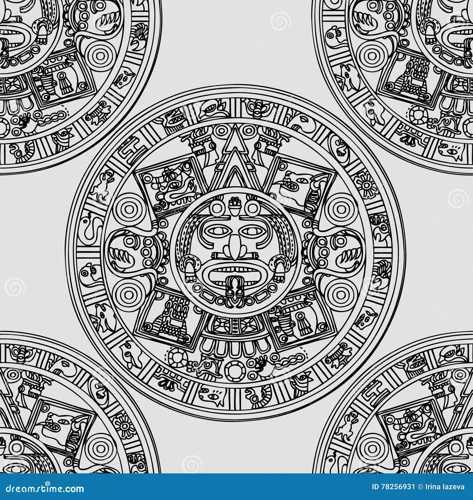
In modern times, Mayan symbols continue to hold a powerful allure, transcending their ancient origins and finding expression in various forms of art and culture. Contemporary artists draw inspiration from the intricate symbolism of the Mayans, incorporating these enigmatic motifs into their creations. The mesmerizing Mayan symbols have become a source of fascination for many, with their timeless appeal and deep cultural significance. Additionally, the popularity of Mayan symbols as tattoos has soared, with individuals embracing these ancient designs as a means of personal expression and connection to the spiritual world. These tattoos allow individuals to carry the profound wisdom and symbolism of the Mayans with them, forging a link between past and present. Whether it is in contemporary artworks or as tattoos, Mayan symbols continue to captivate and inspire, reminding us of the enduring legacy of this remarkable civilization.
Mayan Symbolism in Contemporary Art
Mayan symbolism continues to inspire and influence contemporary art, serving as a bridge between ancient wisdom and modern expression. Artists from various backgrounds and cultures have embraced Mayan symbols, incorporating them into their works to evoke a sense of mystique, spirituality, and cultural heritage. Through paintings, sculptures, installations, and mixed media, these artists aim to pay homage to the intricate symbolism of the Mayan civilization while infusing their own unique perspectives. Symbolic representations of gods, animals, celestial bodies, and cultural motifs can be found in contemporary art pieces, offering viewers a chance to explore the depths of Mayan symbolism in a new and dynamic context. Some artists interpret Mayan symbolism in a figurative manner, recreating traditional Mayan artwork with a modern twist, while others take a more abstract approach, using Mayan symbols as a source of inspiration to create thought-provoking and visually captivating pieces. This integration of Mayan symbolism into contemporary art not only preserves the cultural legacy of the Mayans but also invites viewers to engage with a rich tapestry of history, spirituality, and artistic expression. By exploring modern artwork influenced by Mayan symbolism, we gain a deeper appreciation for the enduring relevance and timeless allure of these sacred symbols. To learn more about the harmonious relationship between symbolism and artistic expression, you can explore the concept of yin and yang, which represents harmony and balance in various cultures such as Taurus and Libra.
Mayan Symbols as Tattoos: A Modern Expression
Mayan symbols have found new life as a form of modern expression through tattoos. In recent years, people from various backgrounds have been drawn to the intricate and captivating designs of Mayan symbols to adorn their bodies. These tattoos serve as powerful personal statements, allowing individuals to connect with the ancient Mayan culture and its symbolism on a deeply personal level. The popularity of Mayan symbol tattoos can be attributed to their aesthetic appeal, as well as the profound meanings they carry. Each symbol holds its own significance and can represent qualities such as strength, protection, wisdom, or spiritual connection.
Mayan symbol tattoos can be seen across different parts of the body, each location enhancing the symbolism behind the chosen design. For example, a tattoo of the jaguar, a symbol of power in Mayan culture, on the arm may represent the wearer’s inner strength and resilience. Similarly, a tattoo of the sacred ceiba tree, symbolizing the connection with the gods, on the back may signify a deep spiritual connection and reverence for the divine.
These tattoos not only serve as a personal expression but also act as a form of cultural appreciation and preservation. By wearing Mayan symbol tattoos, individuals contribute to the preservation of Mayan culture and its rich symbolism, keeping it alive in the modern world. It serves as a reminder of the ancient wisdom and spiritual beliefs that the Mayan civilization embraced.
While getting a Mayan symbol tattoo is a deeply personal and creative choice, it is essential to approach it with respect and understanding for the cultural significance behind the symbols. It is recommended to research and consult with a professional tattoo artist who specializes in Mayan symbolism to ensure accurate depiction and interpretation of the chosen symbols.
Mayan symbol tattoos serve as lasting reminders of the beauty and profundity of ancient Mayan culture, connecting individuals to a rich heritage and offering a visual representation of their own personal beliefs and values. By embracing Mayan symbols as tattoos, people continue the tradition of storytelling and expression that has spanned centuries, bridging the gap between ancient wisdom and modern interpretation.
Conclusion
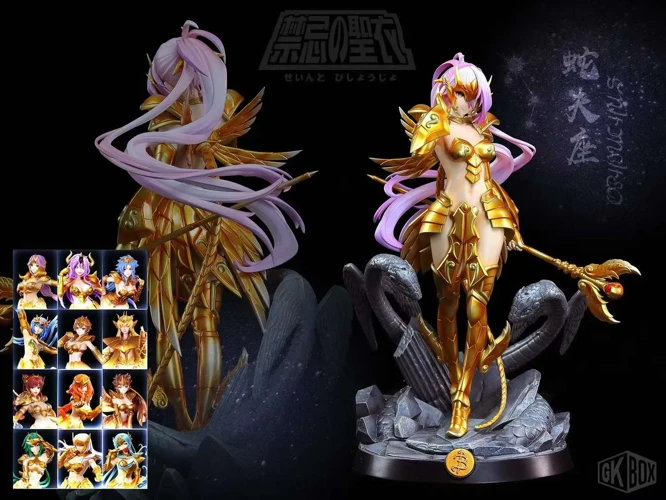
In conclusion, the sacred Mayan symbols provide us with a glimpse into a civilization that revered the intricate connection between the physical and spiritual realms. These symbols, with their deep meanings and rich cultural significance, continue to captivate and intrigue us to this day. Through the study of Mayan symbolism, we gain an insight into the Mayan worldview, their beliefs, and the importance they placed on celestial events and natural elements. The Mayan symbols not only serve as a testament to their ingenuity and creativity but also as a reminder of the profound wisdom and spirituality that permeated their society. Today, we can see the influence of Mayan symbols in contemporary art, where artists draw inspiration from their enigmatic designs and incorporate them into their creations. Additionally, the timeless appeal of Mayan symbols has led to their adoption as tattoos, allowing individuals to express their connection to ancient wisdom and spirituality. As we delve deeper into the world of Mayan symbols, we uncover a treasure trove of knowledge and beauty, reminding us of the enduring power and relevance of these ancient symbols in our modern world.
Note: The significance of symbols in different cultures can be seen in various forms, such as the use of the Yin Yang symbol in Eastern philosophy to represent harmony and balance. To learn more about this powerful symbol, you can explore our article on the Yin Yang symbol and its connection to Taurus and Libra.
Frequently Asked Questions

1. What are some common Mayan symbols?
Common Mayan symbols include the Winged Serpent, representing Quetzalcoatl, the Sun, symbolizing Kin, and Maize, connected to the myth of Hun Hunahpu.
2. How did Mayan symbols originate?
Mayan symbols originated from the ancient Mayan culture, where they were developed as a complex system of communication and representation of their beliefs, history, and culture.
3. What was the importance of Mayan symbols in Mayan culture?
Mayan symbols held great importance in Mayan culture as they were seen as a means to connect with the divine, convey complex concepts, record historical events, and understand the natural world.
4. What does the Jaguar symbolize in Mayan symbolism?
The Jaguar symbolizes power, strength, and authority in Mayan symbolism. It is often associated with royalty, warriors, and the spiritual realm.
5. What role did water play in Mayan symbolism?
Water held a significant role in Mayan symbolism as it symbolized the source of life, purification, and transformation. It represented the essential element necessary for growth and sustenance.
6. How did the Mayans interpret the symbol of the eclipse?
The Mayans interpreted the symbol of the eclipse as a cosmic transformation, where the alignment of celestial bodies signified a powerful event that could bring about changes in the earthly realm.
7. What is the significance of the Sacred Ceiba Tree in Mayan symbolism?
The Sacred Ceiba Tree represents the connection between the physical and spiritual worlds in Mayan symbolism. It was believed to be a conduit between humans and the gods, serving as a symbol of divine communication and spiritual guidance.
8. How does Mayan symbolism influence contemporary art?
The rich symbolism of the Mayans continues to inspire contemporary artists, who incorporate Mayan symbols into their artwork as a way to pay homage to the ancient civilization and explore themes of spirituality, culture, and history.
9. Why do people choose Mayan symbols as tattoos?
Mayan symbols are often chosen as tattoos because they carry deep meanings, symbolize spiritual beliefs, and reflect a connection to ancient wisdom. They serve as a personal expression of cultural appreciation and a reminder of the interconnectedness of the past and present.
10. How does the Mayan calendar serve as a roadmap to destiny?
The Mayan calendar, with its intricate system of cycles and calculations, was believed to provide insights into one’s destiny and the cosmic forces influencing their life path. It helped the Mayans navigate their existence and make important decisions based on the guidance provided by the calendar.
References
- What do the symbols on ancient Mayan artifacts mean?
- Ix Chel’s Coiled Snake Headdress: Sacred Symbol of Maya …
- Mayan Symbols: What Were They And What Did …
Frequently Asked Questions

What is the significance of Mayan symbols?
Mayan symbols hold great significance as they were an integral part of Mayan culture and spirituality. These symbols were used to represent various concepts, deities, and natural elements, allowing the Mayans to communicate and express their beliefs.
Were Mayan symbols used for writing?
Yes, Mayan symbols were used for writing. The Mayans developed a complex writing system known as hieroglyphics, which consisted of a combination of symbols and glyphs. This system was used to record historical events, religious rituals, and other important information.
What is the meaning of the Winged Serpent symbol?
The Winged Serpent, also known as Quetzalcoatl, represents a powerful deity in Mayan mythology. It symbolizes the duality of nature and the cosmic balance between earth and sky. Quetzalcoatl is often associated with creation, wisdom, and fertility.
What does the Sun symbolize in Mayan culture?
The Sun, known as “Kin” in Mayan culture, is a symbol of life, energy, and fertility. It represents the power of the sun god and the essential role of the sun in sustaining life on Earth. The Sun symbol is frequently depicted with a face, emphasizing its divinity.
What is the significance of the Maize symbol?
The Maize symbol, associated with the deity Hun Hunahpu, holds great cultural and agricultural significance for the Mayans. It represents fertility, sustenance, and abundance. Maize was a staple crop for the Mayans and played a vital role in their daily life and religious rituals.
What does the Jaguar symbolize in Mayan culture?
The Jaguar symbolizes power, strength, and royalty in Mayan culture. It represents the connection between the human and animal realms. The Jaguar was considered a sacred animal and often associated with warriors and rulers.
What is the meaning of the Monkey symbol in Mayan mythology?
The Monkey is seen as a trickster figure in Mayan mythology. It symbolizes intelligence, curiosity, and playfulness. The Monkey is often portrayed as a mischievous character but also represents creativity and problem-solving.
What does the Water symbol represent in Mayan culture?
Water holds great symbolic significance in Mayan culture as it is seen as the source of life and purification. It represents renewal, adaptability, and the flow of energy. Water was also associated with important deities and considered sacred.
What does the Eclipse symbolize in Mayan culture?
The Eclipse symbolizes cosmic transformation in Mayan culture. It represents a significant shift or change, both on a personal and collective level. The Mayans believed that eclipses held great spiritual power and were often seen as omens of transformation and renewal.
How are Mayan symbols used in contemporary art?
Mayan symbols continue to inspire artists in modern times. They are often incorporated into contemporary art as a way to honor Mayan culture and connect with ancestral roots. Artists use these symbols to convey various themes such as spirituality, identity, and cultural heritage.
References
- Mayan Symbols: What Were They And What Did …
- Pawahtun: Unveiling the Mysteries of the Mayan God
- What do the symbols on ancient Mayan artifacts mean?







